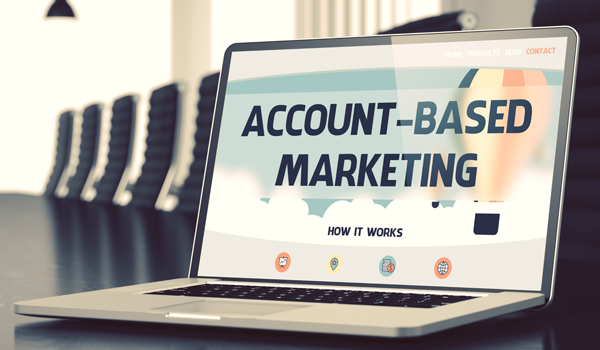Account-Based Marketing (ABM) is a marketing concept that is making waves, particularly in Business-to-Business (B2B) marketing. With Account-Based Marketing, B2B marketing gains a new level of impact and adapts completely to customer behavior in the digital age.
Account-Based Marketing (ABM) is a marketing approach aimed at reaching individual decision-makers within specific companies. The goal is to increase the interest of these key individuals in your products and services through highly personalized communication. This approach is ideal for B2B marketing because it allows for targeting specific individuals without wasteful dispersion.
The challenge of how B2B companies can identify and engage the right decision-makers has been a concern for marketing professionals for some time. Traditional B2B outbound marketing is becoming less effective. On one hand, advertising emails, direct mail, cold calling, and online ads are capturing less attention from recipients. On the other hand, there is significant waste due to the high reach of these methods. Additionally, measuring the return on investment (ROI) of outbound initiatives is often difficult.
Account-Based Marketing directly targets decision-makers
Unlike traditional methods, Account-Based Marketing (ABM) specifically targets individuals within a company who are responsible for making purchasing decisions or are directly involved in the buying process. This approach ensures that successes are quickly visible. Furthermore, ABM allows you to tailor your outreach to different individuals within potential client organizations, focusing exclusively on those who are part of the buying center. This buying center may include various members of a B2B company such as the CEO, department heads, procurement officers, or influencers like personal assistants and secretaries.
Account-Based Marketing is designed to specifically target all these individuals, providing them with content and leveraging the interactions between the members of the buying center to steer the purchasing decision in the desired direction. For this purpose, professional software is typically used, such as marketing automation solutions from Marketo, HubSpot, or Act-On.
Of course, you first need to identify these target individuals within companies. There are several approaches to do this. It’s crucial to sharpen your understanding of the characteristics and specifics of your existing customers. What aspects define an ideal customer profile for you? What problems do your customers face? What do your customers need to make their daily tasks easier? Answering these questions will generally make it easier to search for similar decision-makers in other companies.
Additionally, individuals who have already shown interest in you and your offering are prime candidates for Account-Based Marketing. Tools such as analytics software can help identify who has visited your website and what they searched for. This allows you to address potential customers with tailored messages. Various marketing strategies can be employed, such as dynamic text on a landing page, personalized email campaigns, or customized ads on platforms like Google, LinkedIn, or Facebook. This way, you can create diverse experiences for the relevant accounts in Account-Based Marketing.
Account-Based Marketing: Three Possible Approaches
The type of personalization depends on the kind of Account-Based Marketing you choose, as there are three strategic approaches:
- Strategic Account-Based Marketing: This approach involves developing individual marketing actions for specific top accounts. These actions are ideally so targeted that a close bond is formed between the client company and the account. Essential to this is, on one hand, the creation of content that demonstrates a deep understanding of the specific challenges faced by the account. On the other hand, it involves the development of highly individualized strategies and marketing measures, such as account-specific events and white papers.
- Account-Based Marketing Lite: Many companies lack the resources to conduct a strategic Account-Based Marketing approach for their most important target and existing customers. Therefore, many practitioners use a lite version, often referred to as the “one-to-few model.” Instead of targeting individual top accounts, marketing is directed at small account groups (between 50 and 1,000) that promise particularly high value. Typically, these are target customers that are similar in size, come from the same industry, and therefore have similar requirements and issues. For example, this could be the largest insurance companies in Germany or the top revenue-generating machinery manufacturers with production sites. Marketing and sales must work closely together. Once both sides have defined which target companies to address with ABM, they jointly decide on relevant topics (challenges, offers, etc.), marketing measures, and how to create or repurpose content that is relevant for all accounts.
- Programmatic Account-Based Marketing: In this approach, hundreds or even thousands of B2B accounts are segmented and automatically addressed based on certain similarities. A common segmentation criterion is industry affiliation. For instance, if a visitor to your website is recognized as an employee of a particular industry company, your website can dynamically display industry-specific content for similar visitors. Instead of general information, the visitor now sees content relevant to their industry without having to make a specific selection. This hybrid form is especially suitable for companies where the resource investment in the first two stages is not worthwhile or for beginners who are unsure if Account-Based Marketing is right for them.
Which approach ultimately suits you best depends on your personal goals, potential customers, available marketing channels, budget, sales cycles, and the capacity of your sales staff..
The Benefits of Account-Based Marketing
It is clear: Account-Based Marketing is an increasingly popular approach for B2B companies that serve larger accounts, have long sales cycles, and typically make significant deals. Account-Based Marketing offers many advantages compared to other marketing approaches in the B2B sector:
- Targeted Marketing Approach: Instead of a generic approach, marketers create personalized messages for target accounts to tailor the campaign using existing knowledge to the specific characteristics and needs of the customer.
- Collaboration of Sales and Marketing: Account-Based Marketing encourages marketing and sales organizations to work together to identify target accounts, create customized campaigns for them, and jointly convert these accounts into customers.
- Shorter Sales Cycles: Fundamental purchasing decisions involve many stakeholders, which typically slows down the sales process as it starts at a lower level in the organization and slowly moves up to the primary decision-maker. Account-Based Marketing shortens the cycle length by addressing decision-makers first.
- Reduced Resource Waste: Time and resources are focused tightly on a small number of accounts that are most likely to close sales, conserving personnel resources that can be used elsewhere.
- Clearer ROI: Account-Based Marketing is precise, measurable, and offers the highest ROI of all B2B marketing tactics. Research shows that 85 percent of marketers who track ROI describe Account-Based Marketing as more effective than any other marketing approach.
If you want to join the 85 percent who successfully implement Account-Based Marketing but aren't sure which levers to pull, contact one of our experts. We’ll be happy to help.


